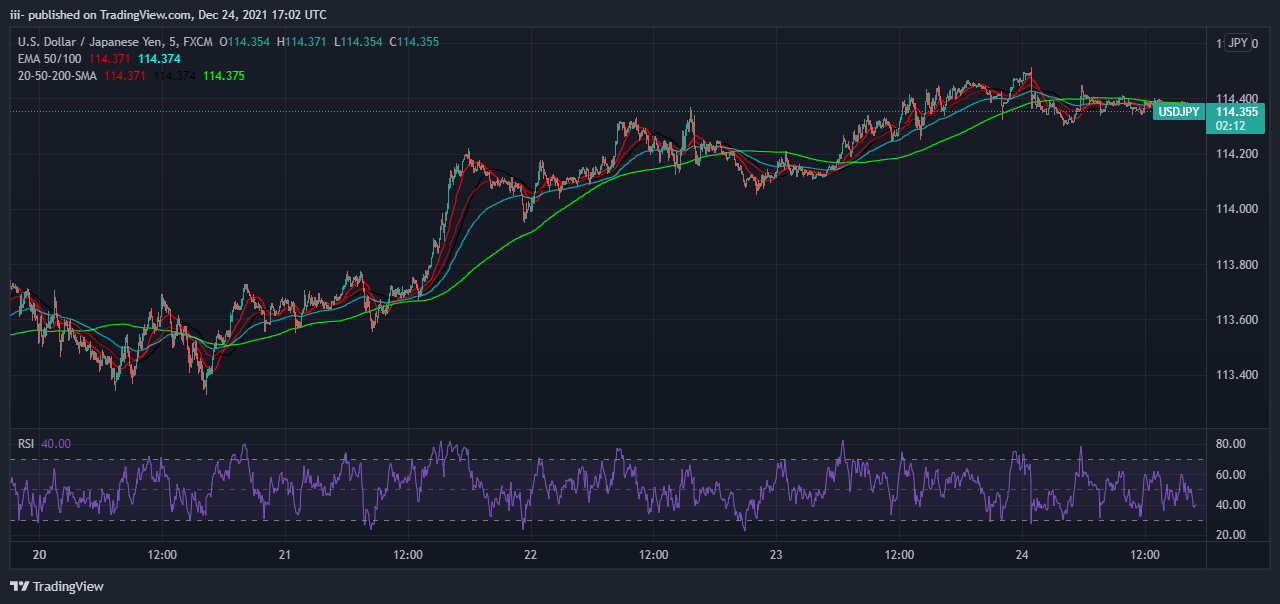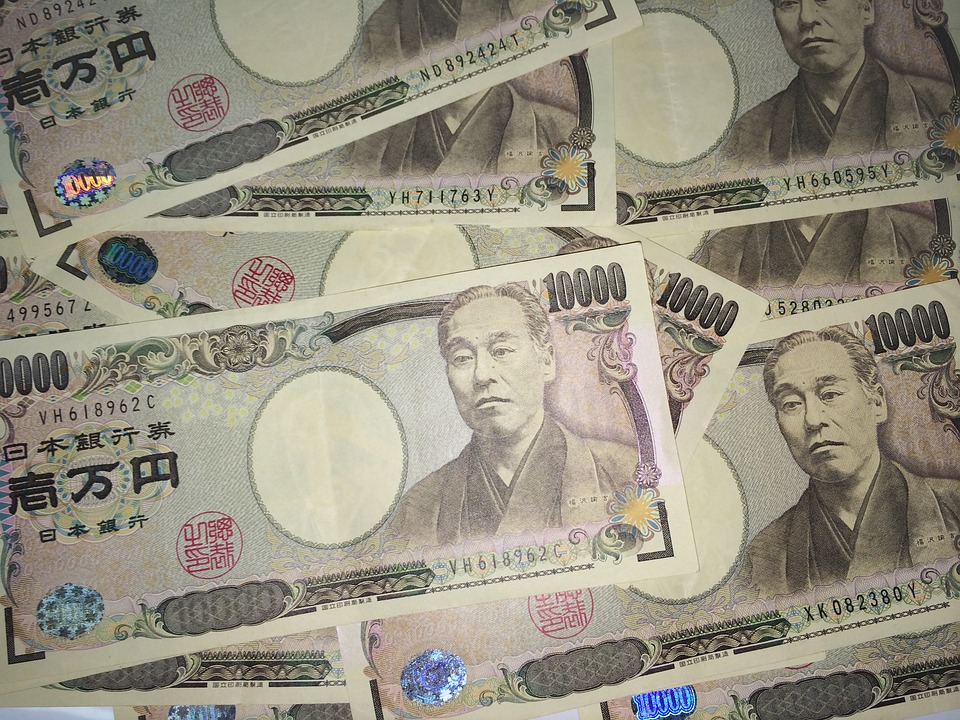The USD/JPY hit 114.49 on Friday, as worries faded that the Omicron strain would cause global economic shutdowns. In contrast, US inflation hit another low in November, increasing the Federal Reserve’s likelihood to act on interest rates during the first quarter.
The Dollar-Yen has recovered roughly half of its November 26 Omicron drop from 115.35 to 113.10 on Christmas Eve.
Increasing COVID case counts in New York City and throughout the US do not appear to be causing an increase in hospitalization, reducing the risk of economic impositions. However, the possible impact of this infectious wave on the global economy is unknown.
Inflation remains a hot concern in the US. The US central bank’s favorite inflation index, Personal Consumption Expenditure Prices (PCE), climbed to 5.7% in November, up from 5.1% in October. The core PCE Price Index rose to 4.7% from 4.2% in October, the sharpest since September 1983.
President Jerome Powell restated the Fed’s aim to stop its bond-buying program before raising the fed funds rate on December 15. Bond buying will stop in March. A rate hike is expected to occur on May 3-4, when the Federal Open Market Committee meets.
According to Fed governor Christopher Waller, the goal of expanding the taper from $15 billion to $30 billion was to finish the program in time for the FOMC session on March 15-16. To make that conference “live,” implying that it is open to an increase in Fed funding,
Markets are sold. On Friday morning, the CBOE’s Fed Funds Futures indicated a 56.5% likelihood of a rise at the March meeting.
Despite the disparity in monetary authorities’ rates, Japan’s debt has a substantial advantage due to the vastly different CPIs. The Japanese CPI was 0.6% in November, whereas the US CPI was 5.7%. The BOJ’s base rate was -0.1%, while the Fed’s upper goal was 0.25.
Taking currency movements into account, the actual interest rate for the Fed funds is 5.45%, while for the BOJ, it is -0.75%. (-0.1% to 0.6%). On December 23, the US 10-year Treasury yielded 1.439%, while the corresponding Japanese Government Bond (JGB) yielded 0.068%. On the other hand, the JGB has a real rate of -0.532%.
Despite the US’s rapidly changing monetary policy, this divergence will help limit Dollar-Yen appreciation.
The November Core National CPI was -0.6%, its ninth consecutive negative month. These readings will not pacify the BOJ.
The PCE inflation statistics led the US data. November’s headline and ex-transportation durable goods orders were 2.5% and 0.8% above expectations. Only nondefense capital goods fell short, falling -0.1%. Business investment had a great year; thus, the tail near 2021’s end had little effect.
USD/JPY Dynamics
The USD/JPY underlying trend will continue throughout the first quarter. Treasury rates in the US should be released from year-end portfolio adjustments in January, and the Fed is targeting a March Fed funds rise.
The US inflation rate is expected to fall during the first quarter, helping the Dollar while not affecting the Fed’s plans.
The monthly figure is projected to rise, while the yearly total is expected to shrink. October retail sales are expected to nearly quadruple to 1.7%. Neither will have an impact on trade next week.
Last week in the US, there were a few second-line data updates. The October S & P Case Shiller Home Price Index is crucial. Home prices have risen 19.6% yearly in July, August, and September, and inflation is a hot topic. The Richmond and Dallas Fed manufacturing indices for December will be released first.
This week, the absence of liquidity and coherence in resistance makes the upswing susceptible. Purchasing should be held between 114.00 and 112.75.
The USD/JPY targets the weak resistance levels of 114.85 and 115.35 to finish a stop-driven run like the one on November 26.
USD/JPY Technical Overview

USD/JPY CHART Source: Tradingview.com
MACD and RSI maintain buy signals. THIS WEEK, the MACD divergence widened due to Tuesday and Thursday’s advances. Since December 6, the daily ranges have shrunk dramatically.
To read the USD/JPY chart, look for the 21-day MA crossing the 50-day MA on December 16. Since late September, its slope has accelerated, although it is still two digits behind the current market.
Even in the liquidity-depleted penultimate week of trading this year, the abundance of support lines should limit any significant decline. The reverse is the true north of 114.50.
The information provided on this website should not be interpreted as financial or investment guidance and may not embody the perspectives of Forex Tools Trader or its contributors. Forex Tools Trader does not hold responsibility for any financial setbacks experienced due to the use of information provided on this website by its writers or patrons. It's essential to thoroughly investigate and make informed decisions before entering any financial commitments, particularly concerning third-party reviews, presales, and similar ventures. The content you are viewing may be sponsored content, read our full disclaimer to learn more.



